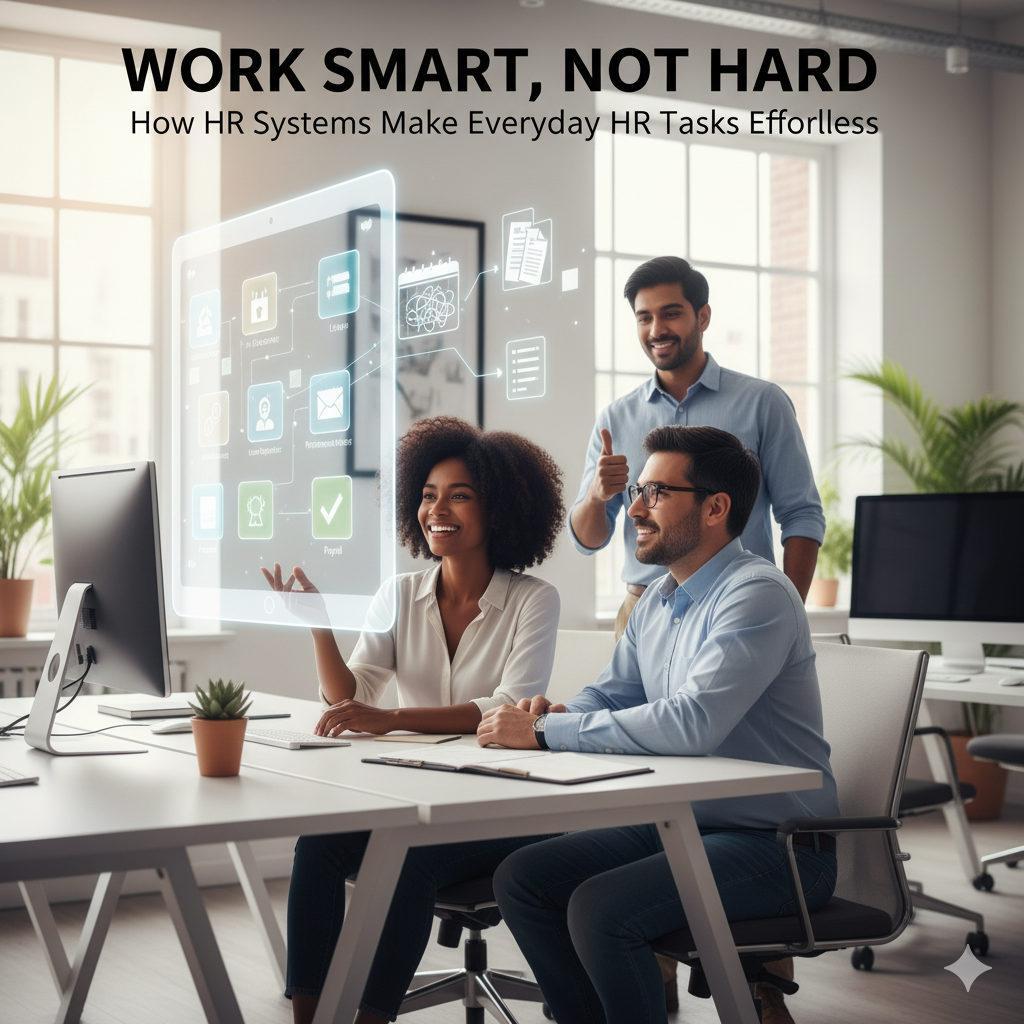The world of human resources is constantly evolving. Gone are the days when HR staff had to juggle piles of paperwork, manually track attendance, and process payroll using spreadsheets. Today, modern HR systems empower HR teams to work smarter, not harder — automating repetitive tasks and streamlining daily operations with just a few clicks.
Whether you’re managing recruitment, employee data, or performance evaluations, an HR system in the Philippines helps your team stay organized, efficient, and compliant, allowing you to focus on what really matters — your people.
What Is an HR System?
An HR system, also known as a Human Resource Information System (HRIS), is a digital platform that automates and manages core HR functions. These systems integrate multiple HR processes — from payroll and attendance tracking to recruitment and employee performance — into one centralized platform.
By using cloud-based HR software, businesses can easily access HR data anytime, anywhere, and eliminate manual errors that often lead to inefficiency and frustration.
How HR Systems Simplify Everyday HR Tasks
- Automated Payroll and Compensation
Manually computing salaries and deductions can take hours, especially for large organizations. An HR system automatically calculates employee pay, taxes, and government contributions (SSS, PhilHealth, Pag-IBIG), ensuring accuracy and compliance with Philippine labor regulations.
- Streamlined Attendance and Timekeeping
Say goodbye to manual logbooks or Excel sheets. Modern HR systems integrate biometric data or online attendance tracking, allowing HR staff to monitor work hours, overtime, and leaves seamlessly — all in real-time.
- Simplified Employee Data Management
HR systems centralize employee information — from personal details to performance records — in a secure digital database. This makes it easy for HR professionals to access, update, and manage records without sorting through paperwork.
- Efficient Recruitment and Onboarding
Recruiting top talent becomes faster with HR software that manages job postings, tracks applications, and automates onboarding. New hires can complete documentation online, reducing delays and administrative workload.
- Performance Tracking and Analytics
A data-driven approach helps HR teams measure employee performance effectively. HR systems generate insightful reports, enabling managers to identify high performers, track progress, and plan career development strategies.
Benefits of Using an HR System for Your Organization
- Increased Productivity
Automation reduces time spent on repetitive tasks, freeing HR staff to focus on strategic goals like employee engagement and retention.
- Enhanced Accuracy
With built-in computation tools and data validation, errors in payroll, attendance, and reporting are minimized.
- Improved Employee Experience
Self-service portals allow employees to view payslips, file leave requests, and update information on their own — fostering transparency and trust.
- Better Compliance
Local HR systems in the Philippines are regularly updated to align with government labor requirements, ensuring your business stays compliant effortlessly.
- Scalability for Growth
As your company expands, your HR system grows with you — accommodating more employees, new departments, and evolving HR needs.
Why Businesses in the Philippines Are Shifting to HR Systems
With hybrid work setups becoming the norm, Filipino companies are realizing the need for cloud-based HR systems to manage their workforce efficiently. These tools not only save time and resources but also help create a paperless, data-driven HR environment.
From startups to established enterprises, more organizations are investing in HR software in the Philippines to stay competitive and support their digital transformation journey.
Choosing the Right HR System
When selecting an HR system for your organization, consider the following:
- Local compliance: Ensure it supports Philippine labor laws and government contributions.
- Ease of use: The system should be intuitive and easy to adopt for HR staff and employees.
- Integration: Look for systems that integrate payroll, timekeeping, and performance management.
- Security: Verify that the software provider follows data privacy and security standards.
- Support and scalability: Choose a provider with strong technical support and options to scale as your company grows.
Conclusion
Working smarter means using the right tools — and for HR professionals, that tool is an integrated HR system. By automating everyday HR tasks, businesses can increase productivity, ensure accuracy, and create a more engaging employee experience.
If your HR team still spends hours on manual processes, now is the perfect time to make the switch. Embrace digital transformation with a cloud-based HR system and make HR management effortless, efficient, and future-ready.




